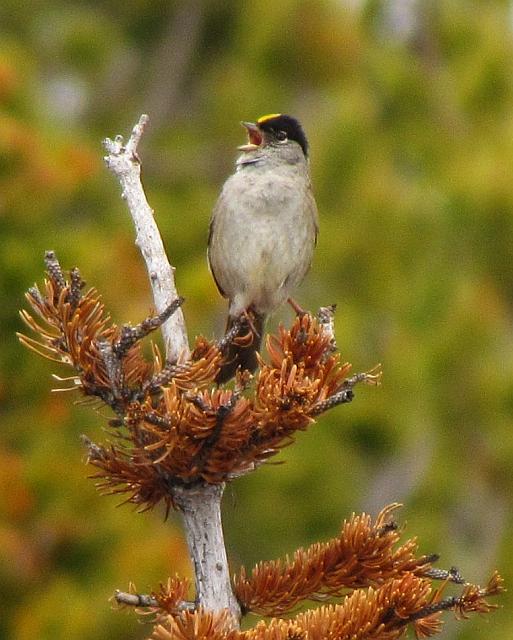The following day we climbed The Mammaries. An hour or so through the bush, and we reached Wiggly Creek Meadow.
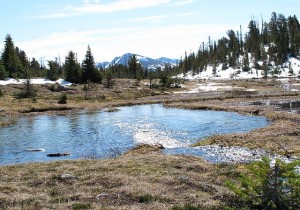
This was a prime area for mountain marsh marigolds
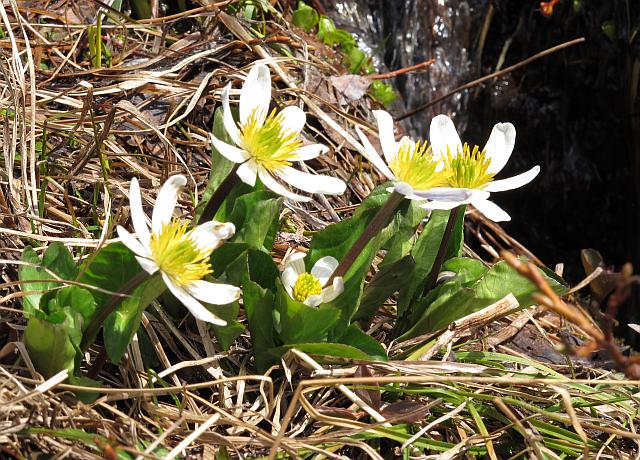
Then we started to hit quite a bit of snow, but fortunately most of Long Meadow was open.
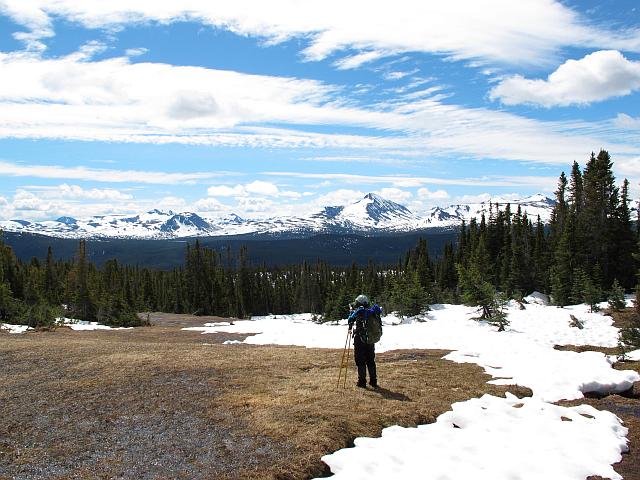
In these wet, run-off conditions, we encountered what I call mouse-poop fungus. It occurs only on mouse bathrooms (which they make in their under-snow villages). It has been suggested that it might be a slime mould, but no one can really tell me what it is.
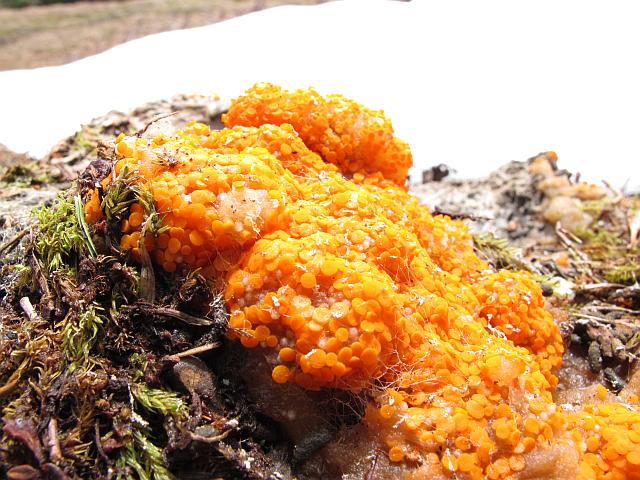
Above there, we ran into solid snow again.
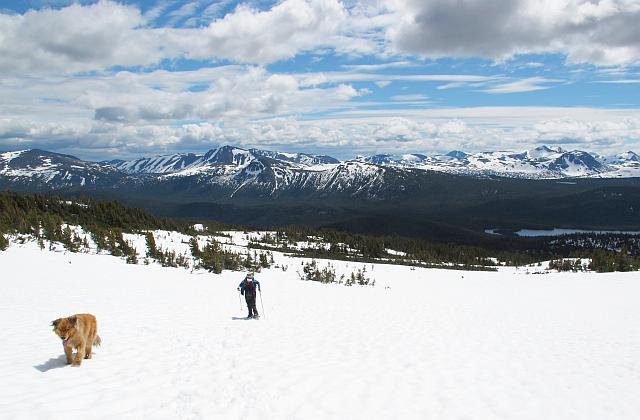
The skies were beautiful. But it was obvious that our brief spell of good weather was ending. Here is a mountain I call Sawtooth but I have never seen it named on any map.
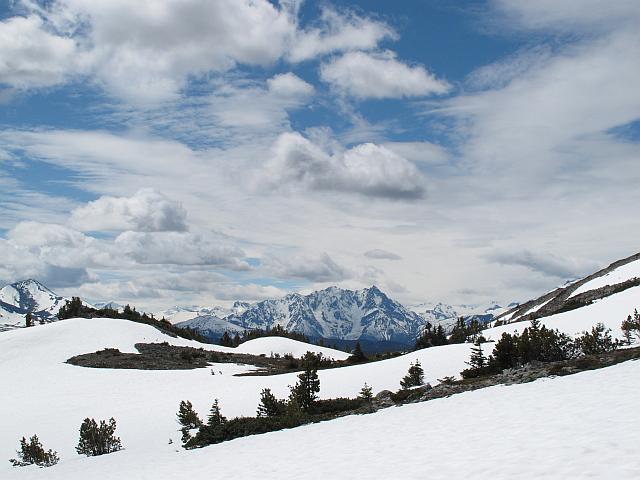
Strangely enough, the higher you get, the better the flowers. The upper parts of the North Ridge have been blasted clear of snow by sun and wind for weeks and all sorts of things were blooming.
One of two Potentilla species:
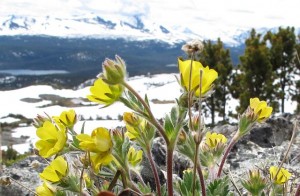
Kinnikinnick (That is Nuk Tessli lake in the background.)
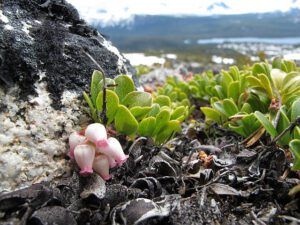
And, as we climbed higher,
Mountain Avens
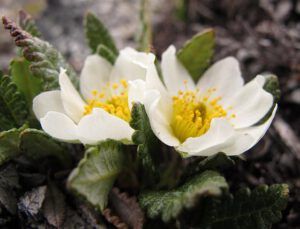
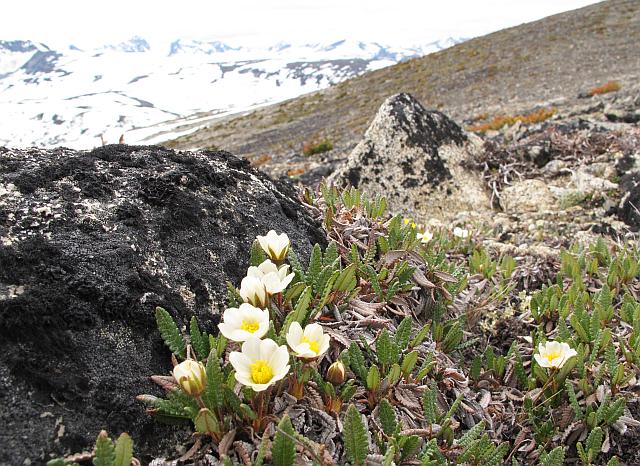
Roseroot
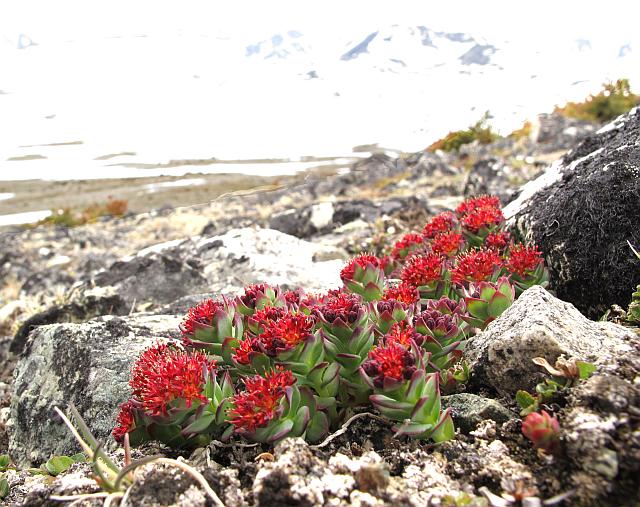
The diminutive snow willow
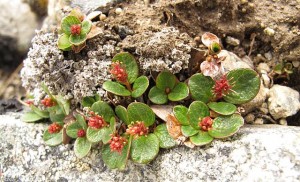
At the top of the North Nipple (of The Mammaries) there were many clumps of what I used to know as Potentilla villosa, but now the experts dispute it and I am not sure of it’s exact name. It is undeniably very striking.
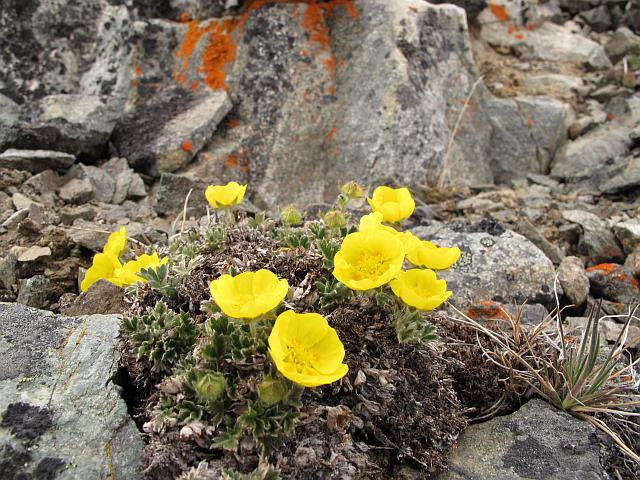
Here is Doreen trying to capture its picture on a ledge.
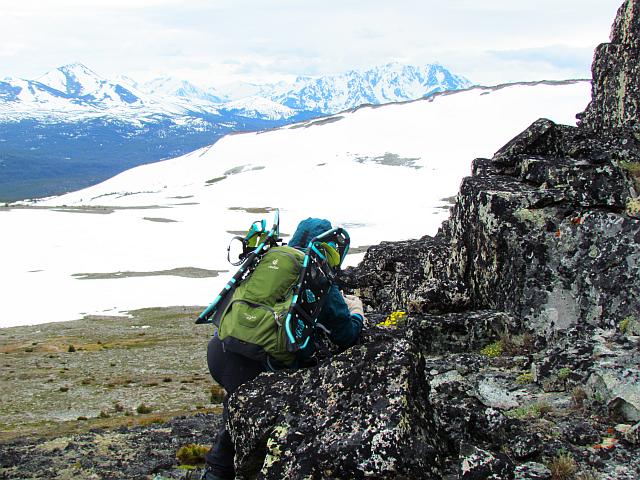
Nearby was a small plant of Saxifraga caespitosa, which is very rare in this area, although common in the arctic and non-acidic soilds.
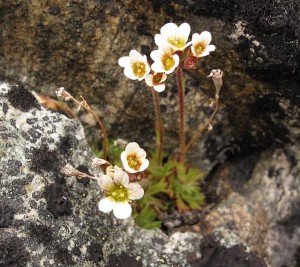
Another close neighbour was payson’s draba, a tiny member of the cabbage or mustard family.
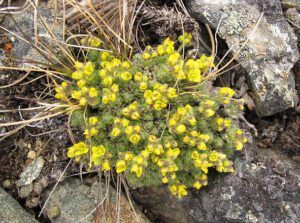
When Doreen photographs, she gets into a zone….
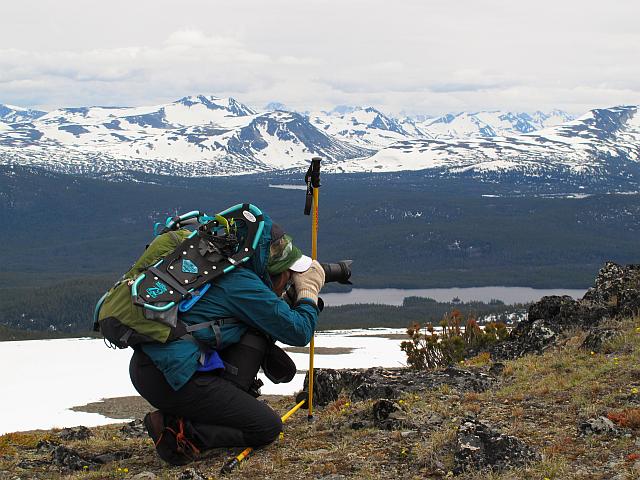
Her main focus was of flowers, but in the background of one shot, she happened to catch a snap of me in my wonderful backyard.
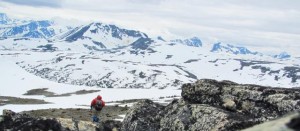
On the way home, we had an extra treat. A gold-crowned sparrow was singing in Long Meadow. There were no other birds, very little wind. The notes fell into the mountain stillness clear and sweet. It is my favourite bird, very much indicative of the alpine of Nuk Tessli.
